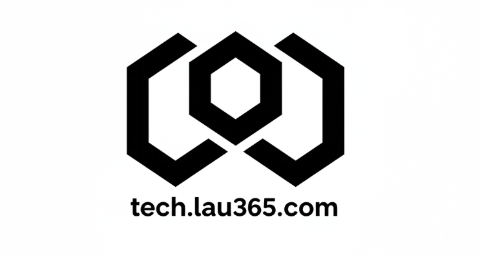Tech M&A: Navigating the Complexities of Acquisitions and Mergers in the Technology Sector
The technology sector is a dynamic and ever-evolving landscape, characterized by rapid innovation, fierce competition, and significant financial transactions. Mergers and acquisitions (M&A) play a crucial role in shaping this landscape, driving growth, consolidating market share, and fostering technological advancements. Understanding the nuances of tech M&A is critical for investors, entrepreneurs, and anyone seeking to navigate this complex ecosystem.
Key Drivers of Tech M&A
Several factors contribute to the high volume of M&A activity in the technology industry:
- Rapid Innovation and Disruption: The tech sector is constantly evolving, with new technologies and business models emerging at an unprecedented pace. Companies engage in M&A to acquire innovative technologies, talent, and intellectual property to stay ahead of the curve and maintain a competitive edge.
- Consolidation of Market Share: M&A can be a strategic tool for companies to increase their market share and dominance. By acquiring competitors or complementary businesses, companies can expand their reach, gain access to new customer segments, and reduce competition.
- Access to Talent and Expertise: Attracting and retaining top talent is a major challenge in the tech industry. Acquiring companies with strong engineering teams, data scientists, or specialized expertise can significantly enhance a company’s capabilities.
- Strategic Expansion into New Markets: M&A provides a faster and more efficient way to expand into new geographic markets or product categories than organic growth. This can help companies diversify their revenue streams and reduce reliance on a single market or product.
- Technological Synergies: Combining complementary technologies and platforms can create significant synergies, resulting in improved efficiency, enhanced product offerings, and increased profitability.
- Access to Capital and Funding: M&A can provide companies with access to additional capital and funding, which can be crucial for supporting growth initiatives, research and development, and expansion plans.
- Defensive Strategies: Companies may engage in acquisitions to prevent competitors from acquiring valuable assets or technologies that could threaten their market position.
Types of Tech M&A Transactions
Tech M&A transactions encompass a variety of structures and strategies:
- Acquisitions: The outright purchase of one company by another. This can involve a cash purchase, stock swap, or a combination of both.
- Mergers: The combination of two or more companies into a single entity. This typically involves a more equal partnership than an acquisition.
- Joint Ventures: A collaboration between two or more companies to create a new entity for a specific purpose. This allows companies to share resources and expertise without a full merger or acquisition.
- Strategic Partnerships: Agreements between companies to cooperate on specific projects or initiatives without a full merger or acquisition. This can involve technology sharing, joint marketing efforts, or other forms of collaboration.
- Divestiture: The sale of a business unit or subsidiary by a larger company. This can be used to streamline operations, focus on core competencies, or raise capital.
Valuation in Tech M&A
Valuing technology companies for M&A transactions is a complex process that requires a deep understanding of the company’s technology, business model, market position, and growth potential. Several valuation methods are commonly used:
- Discounted Cash Flow (DCF) Analysis: This method projects future cash flows and discounts them back to their present value to determine the company’s intrinsic value.
- Comparable Company Analysis: This method compares the company’s valuation multiples (such as Price-to-Earnings ratio or Enterprise Value-to-Revenue) to those of similar publicly traded companies.
- Precedent Transaction Analysis: This method analyzes the prices paid in similar M&A transactions to determine a comparable valuation range.
- Asset-Based Valuation: This method values the company based on the fair market value of its tangible and intangible assets.
The choice of valuation method depends on the specific circumstances of the transaction, the availability of data, and the characteristics of the target company.
Due Diligence in Tech M&A
Thorough due diligence is crucial in tech M&A to identify potential risks and ensure the transaction is well-informed. Key areas of due diligence include:
- Financial Due Diligence: Examining the target company’s financial statements, revenue streams, profitability, and cash flow.
- Legal Due Diligence: Reviewing contracts, intellectual property rights, regulatory compliance, and litigation history.
- Technical Due Diligence: Assessing the target company’s technology, infrastructure, security, and scalability.
- Commercial Due Diligence: Evaluating the target company’s market position, customer base, competitive landscape, and growth strategy.
- Operational Due Diligence: Assessing the target company’s management team, employees, processes, and operational efficiency.
Integration Challenges in Tech M&A
Successfully integrating acquired companies is often a significant challenge in tech M&A. Potential challenges include:
- Culture Clash: Differences in corporate culture can create friction and hinder integration efforts.
- Technology Integration: Integrating different technology platforms and systems can be complex and time-consuming.
- Employee Retention: Retaining key employees from the acquired company is crucial for maintaining its value and expertise.
- Customer Retention: Maintaining customer relationships and satisfaction during and after the integration process is critical.
- Regulatory Compliance: Ensuring compliance with antitrust laws and other regulations is essential.
Regulatory Considerations in Tech M&A
Tech M&A transactions are subject to various regulatory approvals and considerations, including:
- Antitrust Laws: These laws aim to prevent mergers and acquisitions that could stifle competition. Regulatory bodies review transactions to ensure they don’t create monopolies or reduce consumer choice.
- Data Privacy Regulations: Compliance with data privacy regulations, such as GDPR and CCPA, is critical, especially in transactions involving personal data.
- Intellectual Property Rights: Protecting intellectual property rights is a key consideration in tech M&A. Thorough due diligence is necessary to identify and protect valuable IP assets.
- Securities Laws: Compliance with securities laws is important for publicly traded companies engaging in M&A transactions.
The Role of Financial Advisors and Legal Counsel
Experienced financial advisors and legal counsel play a critical role in navigating the complexities of tech M&A. They provide expertise in valuation, due diligence, negotiation, regulatory compliance, and integration planning.
Emerging Trends in Tech M&A
The tech M&A landscape is constantly evolving, with several emerging trends shaping the future:
- Increased Focus on Cybersecurity: With growing concerns about cybersecurity threats, companies are increasingly acquiring cybersecurity firms to enhance their defenses.
- Growth of Cloud Computing M&A: The cloud computing market is experiencing significant consolidation, with major players acquiring smaller companies to expand their offerings and market share.
- Artificial Intelligence (AI) and Machine Learning (ML) Acquisitions: Companies are actively seeking to acquire companies with expertise in AI and ML to leverage these technologies for innovation and growth.
- Rise of Strategic Partnerships: In addition to acquisitions, strategic partnerships are becoming increasingly prevalent, allowing companies to collaborate on specific projects and initiatives.
- Increased Scrutiny from Regulators: Regulatory scrutiny of tech M&A is intensifying, particularly in areas such as antitrust and data privacy.
Conclusion (Omitted as per instructions)

